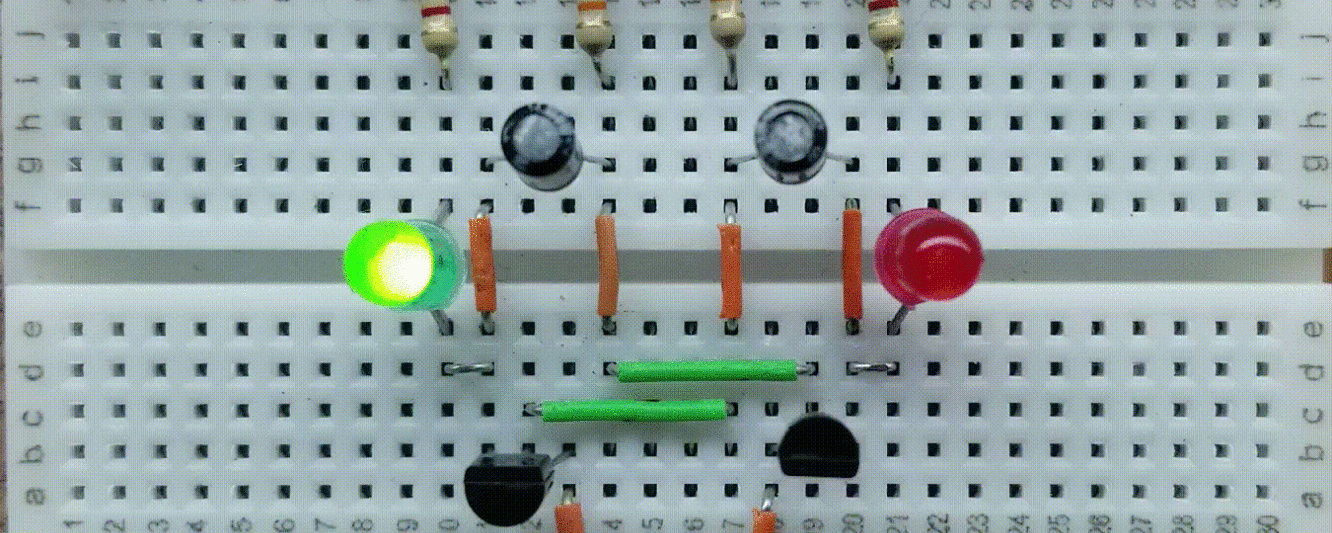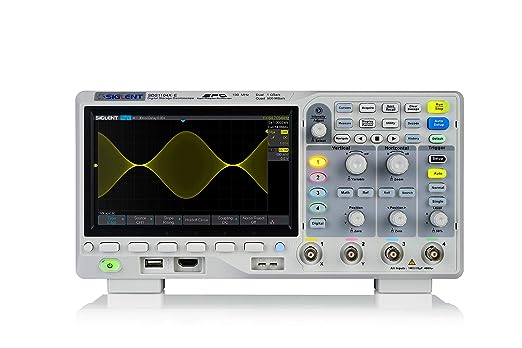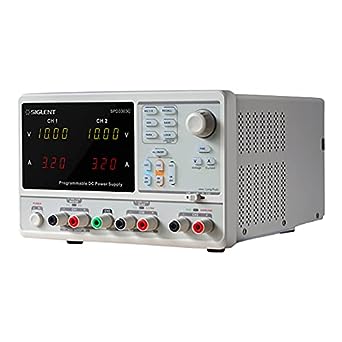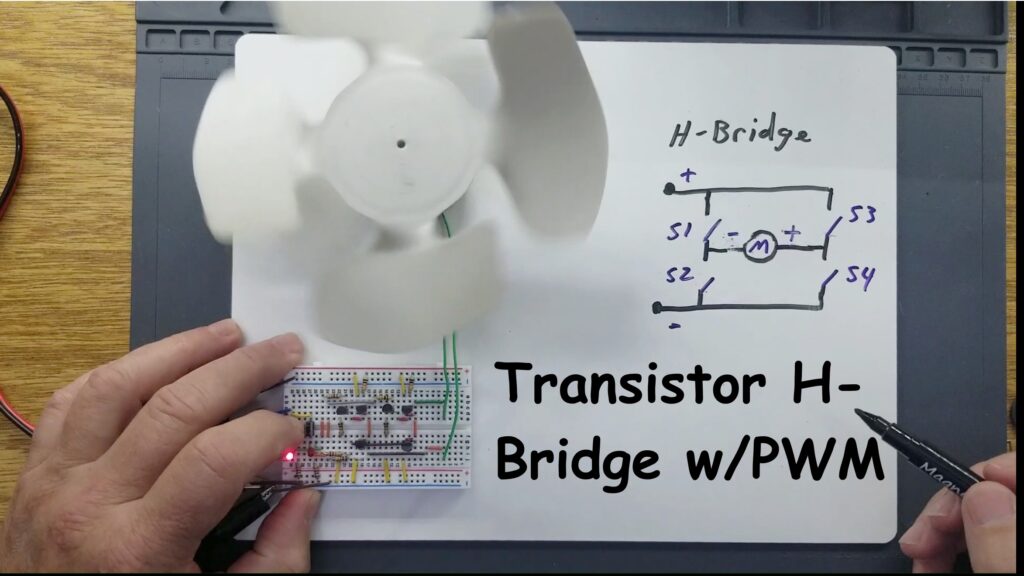
Intro
An H-bridge is simply a configuration of switches that are oriented in a way so as to control or reverse the polarity to a load. As shown in the picture, the switches allow you to orient the polarity to the motor by simultaneously closing S1 and S4 for a left side positive polarity, or simultaneously closing switches S2 and S3 for a right side positive polarity. In practicality, a mechanically switched H -bridge is not very useful. As such, a semiconductor based H-bridge can be employed that effectively accomplishes the same task. Such an H-bridge can be controlled using 5 volt or 3.3 Volt control signals from a microcontroller. Such control signals could even be in the form of PWM, or pulse width modulation, so that not only the direction of the motor can be controlled, but also the speed.
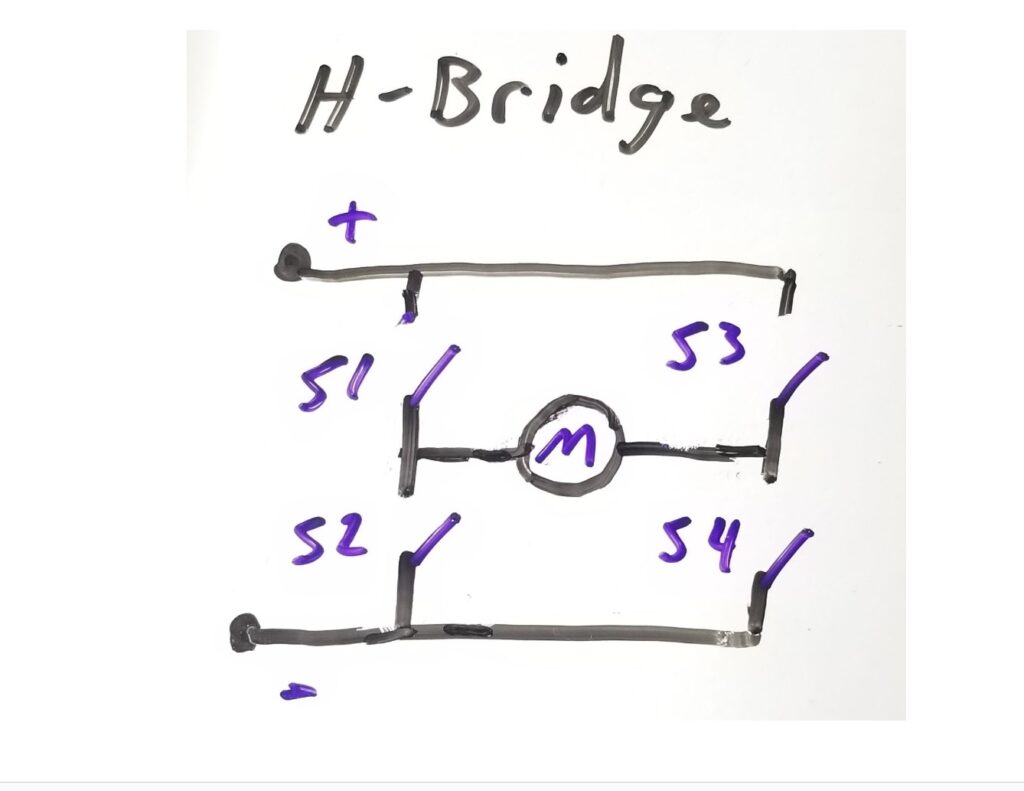
Transistor H-Bridge
The schematic for the transistor based H-bridge is shown below. Transistors Q6, Q1, Q5 and, Q2 represent conceptual switches S1, S2, S3, and S4 respectively. If for example, if you wanted to orient the polarity of the motor so that the positive was on the left side, you would press switch number one. This turns transistor Q4 on which in turn, biases and turns transistor Q6 on. At the same time, transistor Q2 on the bottom right is switched on. This causes current to flow through Q6, through the load, and then through transistor Q2. If however, you would like to have a positive polarity on the right side of the motor, you would press switch number two. That enables transistor Q1 and transistor Q5 through pre-driver transistor Q3. That causes a positive polarity to appear on the right side of the motor because current will flow through transistor Q5, through the motor, through transistor Q1, and to ground. PWM, or pulse width modulation can be substituted for the individual 5V control inputs if speed control in addition to directional control is desired.
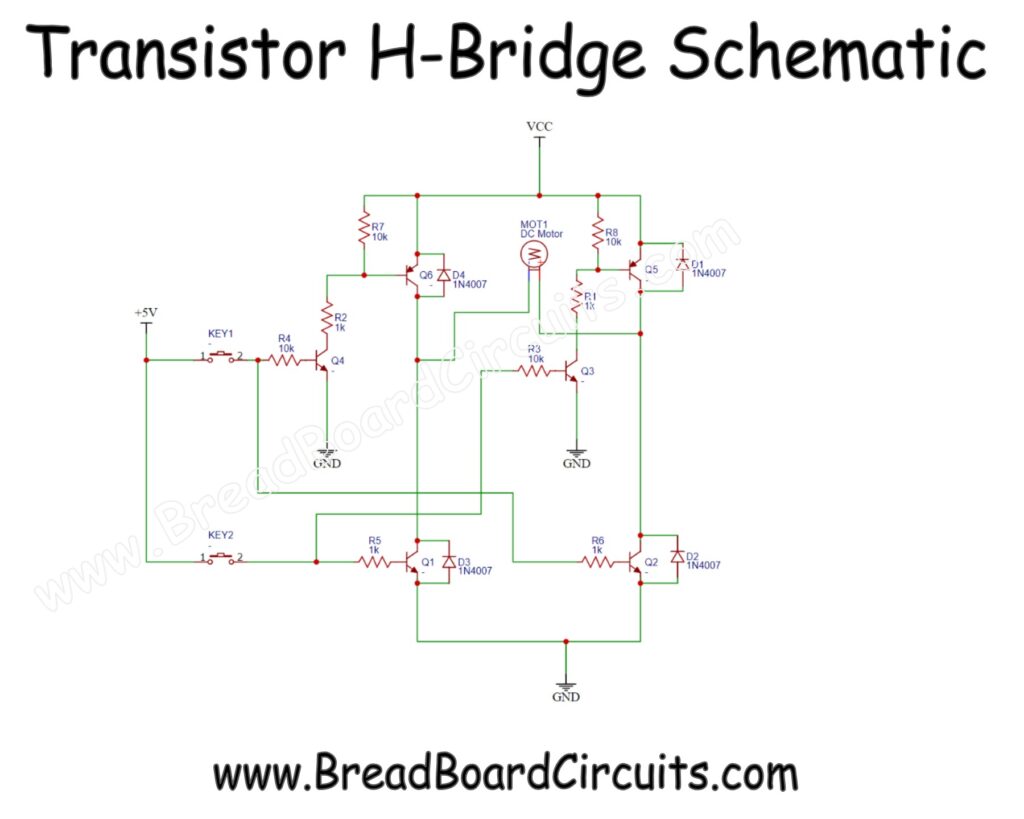
Sigilent 4 Channel, 100Mhz Scope
Breadboard Layout
Below is an image of the demo breadboard along with schematic references. Note that the switches are simply for demonstration purposes. For practical use those switches will be replaced by microcontroller ports. Also LED 1 and LED 2 along with resistors R9 and R10 are not shown on the schematic as they are just for indication purposes. If you would like to build this breadboard, it can be constructed as shown while referencing the parts list. Note that the 12 volt supply is the top red supply rail and that ground is the bottom blue rail. The five Volt or PWM input will be at the top of the switches on the breadboard.
NOTE THAT RESISTORS R1 AND R2 SHOULD BE PLACED ON THE COLLECTORS OF TRANSISTORS Q1 AND Q4 RESPECTIVELY (NOT THE EMITTERS). THIS CHANGE IS BEING MADE, AND A NEW IMAGE WILL BE UPLOADED SHORTLY.
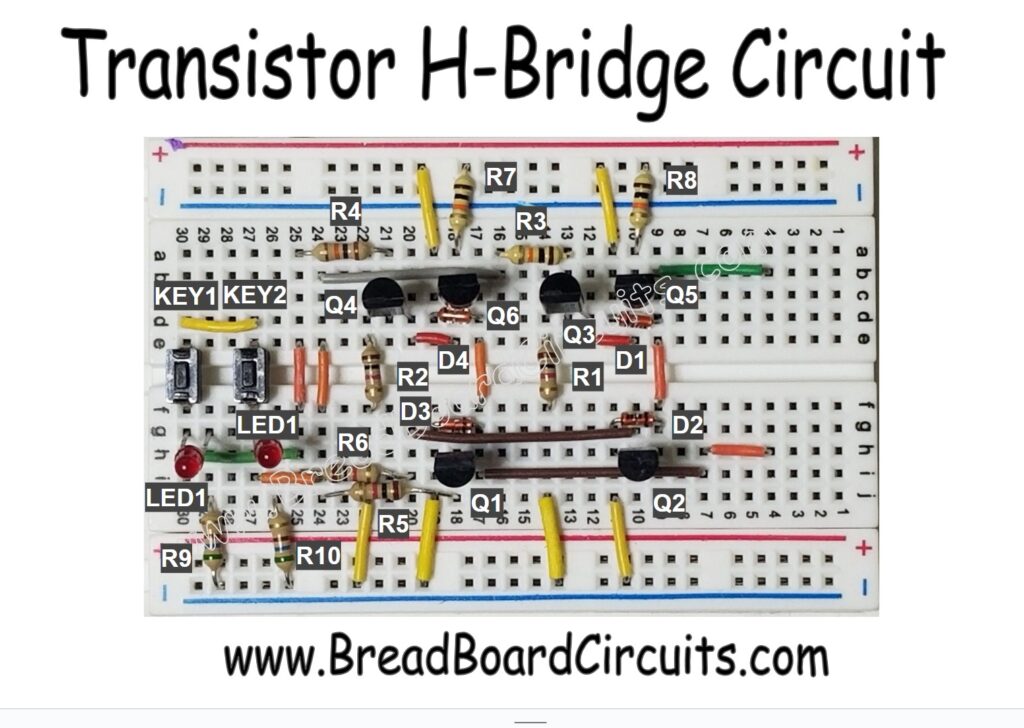
Sigilent SPD3303C DC Power Supply
Parts List
Hello is a parts list for the transistor H bridge demonstration breadboard. Note that selection of transistors Q6, Q1, Q5, and Q2 Harley pendant on your application. If you’re simply using the circuit 2 drive a DC motor, than you would at minimum Watt transistors that can handle 150% of the locked rotor current for that motor. If you’re also using it for breaking as shown in the demonstration video below, you’ll want to measure the actual current draw one breaking and then determine your transistor specifications from there.
- Minimum breadboarding supplies (CLICK HERE FOR RECOMMENDED SUPPLIES)
- (4) 1k ohm, 1/4 watt, 10% resistors (R1, R2, R5, R6)
- (4) 10k ohm, 1/4 watt, 10% resistors (R3, R4, R7 R8)
- (2) 2n3904 NPN Bipolar T0-92 transistors (Q3 and Q4)
- (2) NPN 25v (Vce) Bipolar transistors based on your current draw spec (Q1, Q2)
- (2) PNP 25v (Vce) Bipolar transistors based on your current draw spec (Q5, Q6)
- (4) IN4007 diodes (D1, D2, D3, D4)
Demo Video
Below is a video demonstrating the functionality of this H bridge circuit.
Summary
An H bridge is a fundamental circuit configuration for controlling the polarity of the load. A semiconductor H bridge has described in this article can be used to accomplish the same task via only two microcontroller port outputs. This is for demonstration purposes only. The reader takes full responsibility for any application related to the circuit described in this article.
For a better experience building breadboarded circuits, please see our page detailing the minimum recommended lab equipment for your electronics bench. Also, don’t forget to review the recommended safety procedures to follow when building and testing breadboarded circuits.
Finally, for other interesting breadboarded circuits please visit the home page here or our YouTube channel here. SM
We are a participant in the Amazon Services LLC Associates Program, an affiliate advertising program designed to provide a means for us to earn fees by linking to Amazon.com and affiliated sites.
